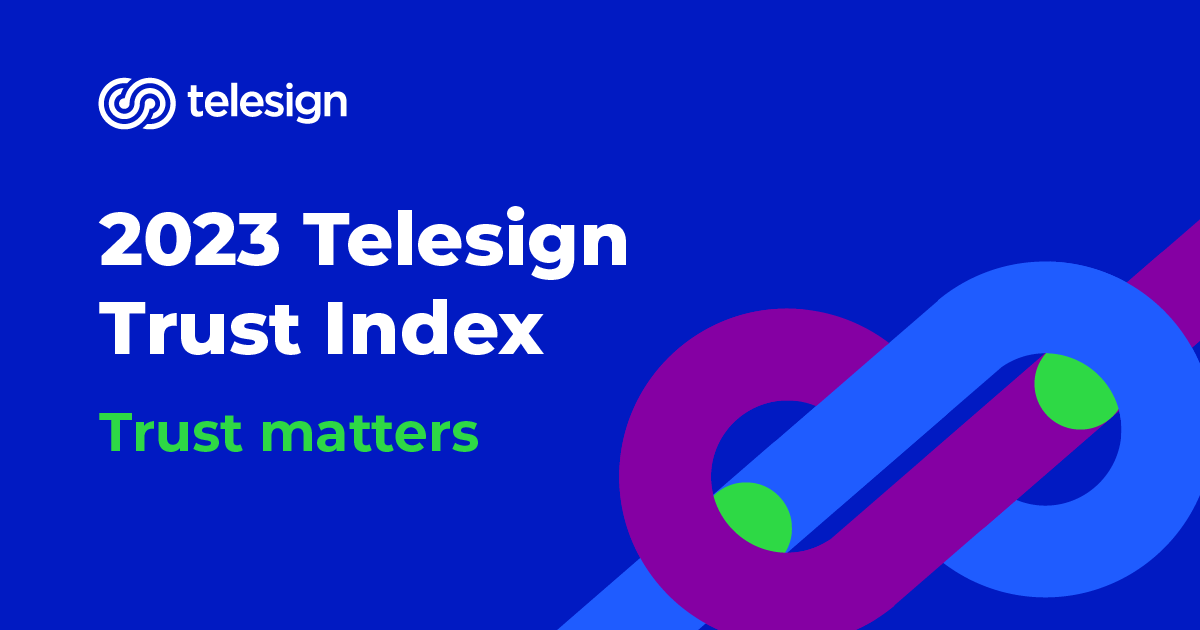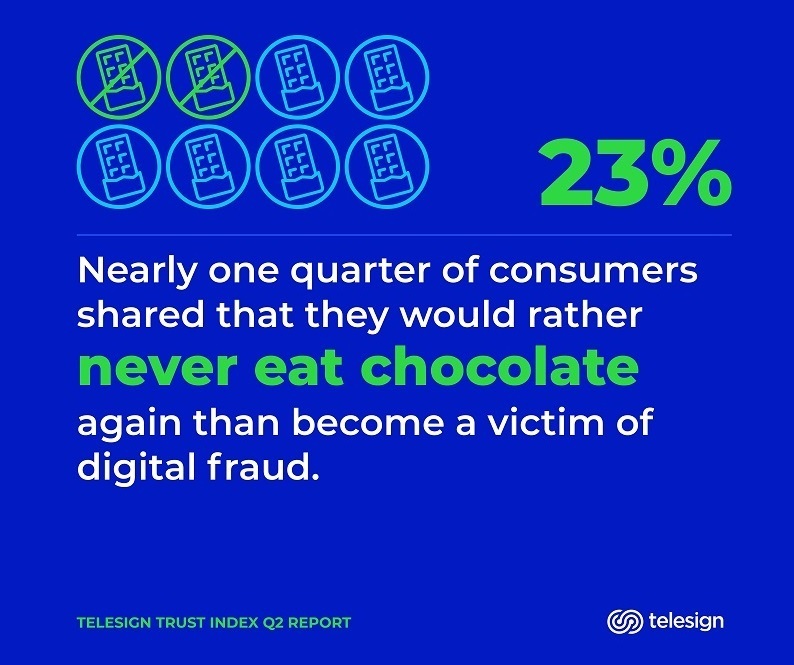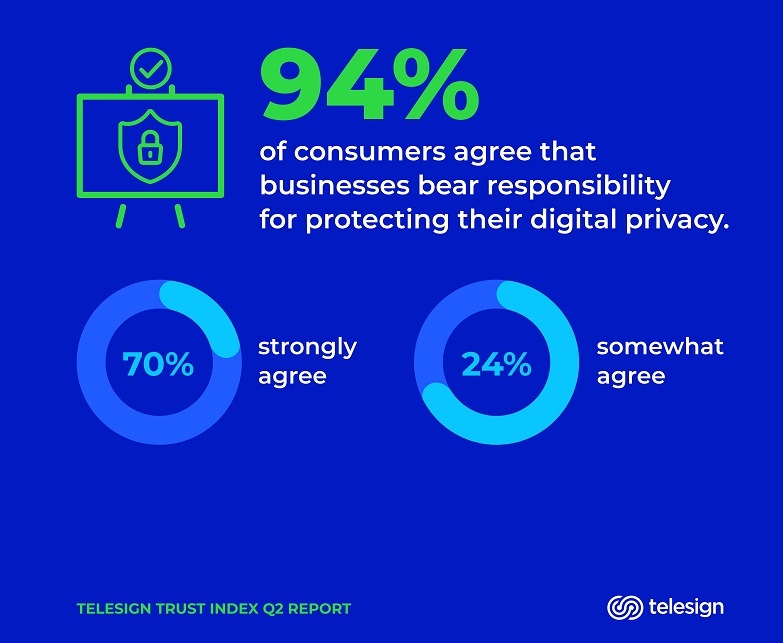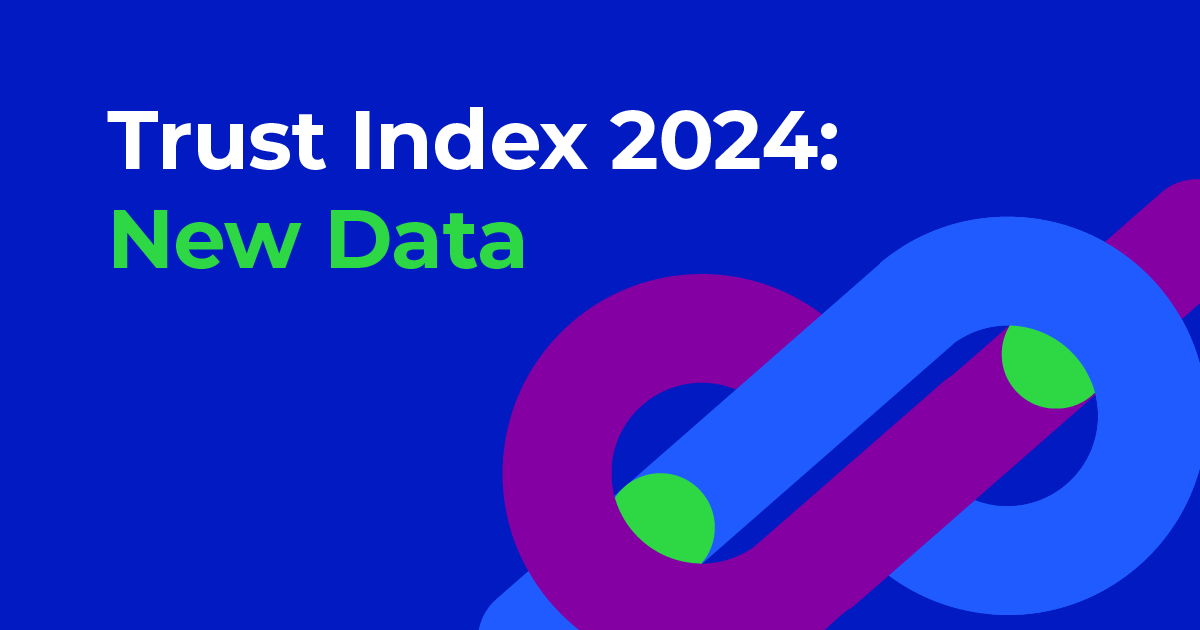
Every brand knows that consumer trust is important, but do they know how important that trust is?
Our new detailed report on trust unveils key findings about companies and trust, including how much fraud negatively affects consumer perception of brands, and who the onus of protection truly falls on.
Table of Contents
The report: New ideas on trust, fraud, and brand reputation
The Telesign Continuous Trust™ Authority is a core part of our brand promise. This exciting new initiative is aimed at making the digital world a safer place, every day.
Telesign’s Trust Index is one of the pillars of the Continuous Trust™ Authority. The Trust Index report investigates fraud, its potential impact on brands, and how trust plays a role in the digital economy.
It is filled with surprising statistics that serve as a reminder of how consumers view trust.
In fact, nearly 1 in 4 fraud victims said they would rather give up chocolate for the rest of their lives than be victims of digital fraud!

Taking the human impact into account provides a better picture of the effects of fraud and how it could change buyer behavior in the future. In a nutshell, if someone has a negative psychological association with fraud, this association will transfer to the company they hold responsible.
Data breaches: Big problem. Bigger buzz.
The world is increasingly going digital, and with this adaptation comes data. Lots of data. And although many companies have worked to keep this potentially sensitive information safe, breaches sometimes occur.
When a company data breach does happen, it acts as a catalyst for customers to change their entire perception of the brand. Like most people, I wouldn’t want my friends and loved ones to do business with a brand if I had a bad experience with them.
I know firsthand what it feels like as a customer when I perceive a brand has either not protected me, or worse yet, taken advantage of me. When this has happened to me in the past, I told everyone I knew and never looked back.
Experiences like these spread negative brand perception like wildfire, as the digital world allows for greater amplification of news and stories. This negative brand perception and broken trust affects more than those directly impacted, as 44% of data breach victims tell their family and friends to steer clear of the brand in question, and 30% voice their displeasure on social media.
Fraud: Who’s to blame?
Fair or not, consumers have imposed the burden of keeping their digital privacy safe on the companies they use: 94% of consumers say brands are responsible for keeping their digital data secure.

And with the increased amount of fraud prevalent today, consumers have shied away from making purchases. This apprehension, combined with consumer beliefs that companies are responsible for protecting their digital privacy, can create a shaky relationship between customers and companies.
But I believe this widening gap can be fixed with trust.
Important takeaways for brands
I think we can all agree that it’s more appealing to do business with trustworthy companies. For brands, the key to building and maintaining trust is through digital fraud protection strategies and technologies that safeguard consumers.
Trust. It keeps going and going and going…
The end goal of companies should be to create an environment of Continuous Trust™. This requires tools, tech, and strategies that go beyond the basic and help companies stay a step ahead.
Here are a few things companies should keep in mind when aiming to build Continuous Trust™:
- Be proactive, not just reactive. Once the digital security of your customers is compromised, there’s usually no way to restore the lost trust, no matter how you react. A proactive approach to stopping fraud is key.
- Adapt or adopt the right tech and processes. Evaluate your current security stack. Is it giving your customers the protection they need? Take advantage of new technologies which increase the likelihood of successfully protecting your customers from fraud. For example, use machine learning to identify risk and keep consumers safe and trust intact.
- Be a steward of trust. Assign a champion in the organization to ensure your company is continually nurturing customer trust. The most progressive organizations are beginning to hire leaders with the role of “Chief Trust Officer” whose primary focus is to facilitate a trusted user experience that customers can depend on.
For more information on how Telesign enables Continuous Trust™, check out the new Continuous Trust™ Authority initiative.



